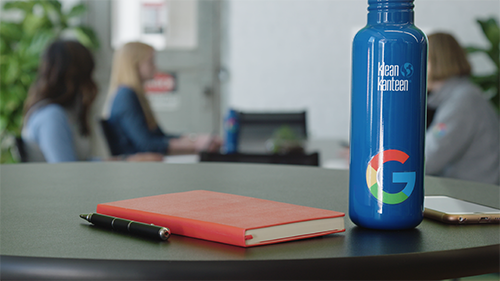Is Screen-Printing or Digital Printing Better?
Is Screen-Printing or Digital Printing Better?

Is Screen-Printing or Digital Printing Better?
Unless you live on the moon, you’re probably aware of how popular printed shirts, jackets and merchandise are. From bands to boardrooms and sports teams to video games, everyone seems to have a line of custom company tee-shirts, logo-branded drinkware, tote bags and so on. But what’s the best way to get that image on the merch?
In this guide we’re going to examine two of the most popular methods – screen printing and digital printing. Now, you may be asking yourself, “screen printing vs digital printing - what’s the difference?” Read onm
What is Screen Printing?
Screen printing is a technique that’s been used since the 1800s, and evolved from the venerable art of stenciling. Over the 20th century it adapted to mechanization, traditionally for mass-producing printed posters or flat packaging. This article from Far’n’Beyond explains screen printing as “a printing technique that involves using a woven mesh screen to support an ink-blocking stencil to receive a desired image. - The screen stencil forms open areas of mesh that transfer ink or other printable materials, by pressing through the mesh as a sharp-edged image onto a substrate.”
One of the big advantages of custom screen printing is that it can be applied to almost any surface, from textiles to balloons and sensitive electronics, as detailed in this article from Great Atlantic Outfitters. As they explain, because this technique doesn’t need to be done under pressure, it can be applied to sensitive materials like wood, glass or plastic as well as textiles.
As we break down in this Merchology article, screen printing is perfect for products like shirts and sports apparel, but also for merchandise such as drinkware, pens and notepads.

What is Digital Printing?
Compared to screen printing’s century-plus of history, custom digital printing is a newcomer to the area of custom printed merchandise. Unlike screen printing’s use of stencils, digital printing uses specialized inkjet printers and toner to apply a pattern from a digital file directly to the substrate of the material on which its being printed. This article by printing experts Xerox explains digital printing as “the process of printing digital-based images directly onto a variety of materials. Digital files such as PDFs or desktop publishing files can be sent directly to the digital printing press.”
This makes digital printing perfect for producing high-quality printed images on a variety of materials in small batches on-demand, . In this article by Priority Press, they explain that DP is ideal for heavyweight papers and cardstocks, as well as fabrics such as linen and polyester. As we explain in this Merchology guide, this makes it ideal for small-run orders of corporate digital printed apparel, promotional paper materials like custom notebooks and company swag like custom water bottles and drinkware.

Is Screen-Printing or Digital Printing Better?
This is the million dollar question – and the answer is, “it depends”! Both screen printing and digital printing have their own advantages, but neither is a universal solution for all projects. As explained in this article from Family Industries, screen printing is better for vibrant colors, prints you need to be super durable, designs with special effects, and a wider, more versatile range of fabrics and materials.
The above article goes on to explain that digital printing is ideal for detailed prints and logos, logos where colors blend and/or ombre and for super consistent looks and prints. Digital printing is also ideal in particular for lower-quantity orders, as they’re lower cost to set up and often don’t have a minimum quantity requirement like screen printing.
In short, screen printing is king when it comes to printing in large volume and on the widest variety of materials and surfaces. Likewise, digital printing has the upper hand when it comes to short runs of printing on shorter notice, and when printing designs with a lot of fine details.
Contact Us!
We hope this guide has helped shed some light for you on the differences between these two printing techniques! If you have more questions – or if you’re ready to start planning your own run of merch with custom printed designs, call your friendly Merchologist today to get our expert help choosing the perfect logo decoration method for your custom company merch!